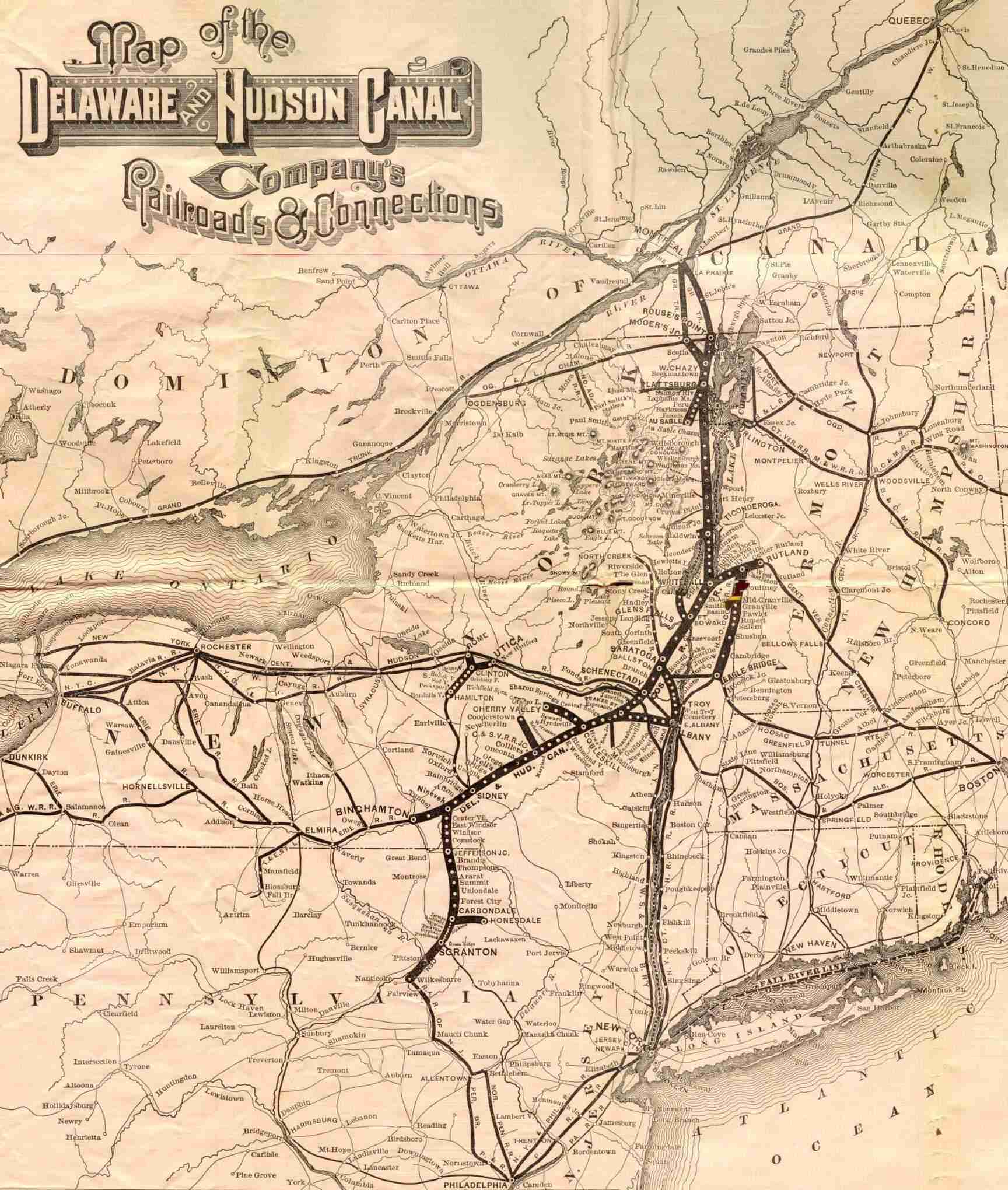While out documenting some searchlight signals on the former Delaware and Hudson territory in Upstate New York I came upon a unique piece of living history several miles west of Mechanicville where the generically named Canadian Pacific "Freight Subdivision" joins with a connector track to Rotterdam Junction westbound and a 9000 foot siding eastbound. As you can see the relay hut for the interlocking plant is suffering from a bit of an identity crisis.
The oldest name is the QS telegraph code which is the original D&H name and was probably taken from the tower that used to be at this location. At some point the D&H caught the CTC bug and when the number of interlockings exploded, instead of trying to make up new call-signs some clever person in the D&H front office just went with a popular variety of the CP system with a suffix indicating the particular subdivision. In this case the Subdivision was F for the "Freight" Subdivision which ran from the Boston and Maine interchange and massive yard complex at Mechanicville to the interchange with the former Erie and DL&W lines in Binghamton with further connections to Scranton. This new organization reflected the growing importance of freight flowing to and from the New England ports over freight to and from Canada and also opportunities granted the D&H during the Conrail merger where the smaller railroad was given expanded track access to help "compete" with the semi-nationalized northeast freight monopoly. So the new designation of the old QS interlocking became CPF-10 as it was 10 miles from the start of the line in Mechanicville.
In 1984 the B&M successor Guilford Rail System and its eccentric owner bought the ailing D&H for essentially pocket change and because he now had a lot more railroad to play with the owner decided to fully integrate his existing 'Freight' Main Line, which ran from near Brunswick, Maine through to Mechanicville, with the D&H line to Binghamton. Out went the millage reset and in came a new set of three digit numbers from 467 to 611 and CPF-10 became CPF-477. GRS ran the D&H into the ground so badly that the D&H portion of GRS went bankrupt in 1988 and Canadian Pacific was eventually brought in to take it over. Now CP Rail wasn't about to go all wacky and re-name things yet again, but it did eventually come by and attach new nameplates on the relay hut.
One result of the CP takeover of the former GRS integrated line is that the CP trains which run primarily to and from Canada (just like the D&H trains did) start off at MP 611 in Binghamton, run to milepost 480 north of Schenectady and then continue straight ahead onto the Canadian Sub with its new mileage system starting at Milepost 21 (facepalm). Oh, and CP trains making the turn to stay on the Freight Sub will continue to count down to 468 at which point they turn onto the Colonie Sub at Milepost 19 which will then count down to zero at Albany.
So the lesson for everyone is to think long and hard before you go and re-chain your rail line because if your expansion plans get undone its going to create major headaches for decades to come.




QS is indeed the D&H designation for Crescent and was that way right up until Guilford decided they wanted to create an impressive mainline from Mattawaumkeag, ME to Sunbury, PA. QS was then re-designated CPF477 because it was 477 miles from the route origin. The original QS model board from the tower is safely preserved in the B&M RR Historical Society's archives. It is a massively heavy oak case about 8' long. The Guilford route was indeed impressive, an impressive failure that is! After that, CPRS has re-designated again.
ReplyDeleteQG did not exist until the D&H decided to remove its original route from Mechanicville up through Round Lake to Ballston Spa. Traffic levels had fallen to the point that the cost of maintaining the extra miles was not worth it and the north leg of the "magic triangle" wye was installed. The additional miles added to the route were negligible as far as operations went.
When was it designated CPF-10?
Delete